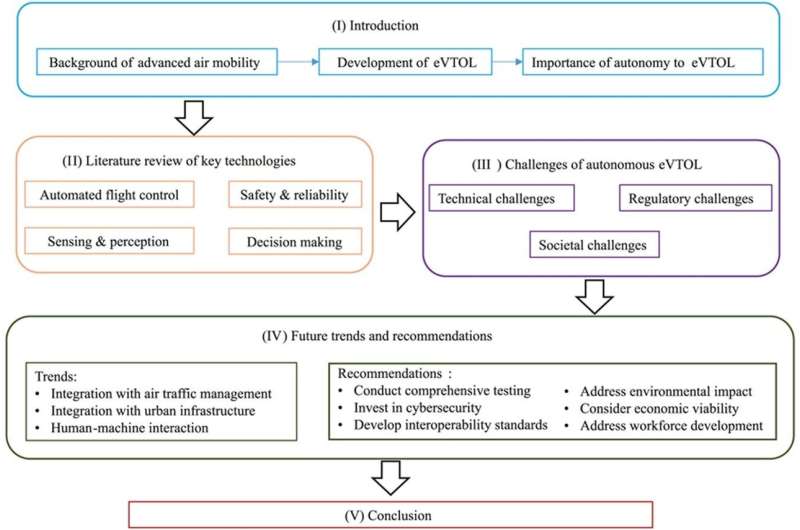
Electric Vertical Take-Off and Landing (eVTOL) aircraft are heralding a new era in transportation, combining sustainability with cutting-edge technology to transform how we move across urban landscapes. As we stand on the brink of realizing these futuristic air vehicles, a comprehensive analysis published in Green Energy and Intelligent Transportation outlines both the significant advancements and the hurdles that lie ahead.
eVTOLs are part of the broader Advanced Air Mobility (AAM) initiative, which seeks to enhance the efficiency and reach of transportation using airspace to alleviate ground congestion and reduce travel times. This innovative mode of transportation has gained momentum with significant investments from key players like NASA, Boeing, and Uber, demonstrating its potential to revolutionize both cargo and passenger transport.
The primary advantage of eVTOLs lies in their electric propulsion systems, which allow for vertical take-offs and landings, making them perfect for crowded urban environments where space is at a premium. This capability not only paves the way for quicker intra-city travel but also supports emergency medical services by providing rapid response solutions.
However, the transition to mainstream eVTOL usage is fraught with challenges. From a technical standpoint, ensuring safety and reliability in densely populated areas remains paramount. The technology needs to achieve a level of safety that surpasses that of traditional aviation—an ambitious goal requiring significant advancements in automated flight control, sensing and perception systems, and decision-making algorithms that enable autonomous operations.
Regulatory hurdles also pose a significant barrier. The current aviation laws were not designed to accommodate the unique features of eVTOLs, necessitating a reevaluation of airworthiness standards and the development of new regulations tailored to these innovative aircraft.
Public acceptance is another crucial factor. The success of eVTOLs will heavily depend on their integration into the existing urban fabric. Concerns over noise, safety, and privacy need to be addressed to gain the trust of communities. Furthermore, the infrastructure must evolve to support the eVTOL ecosystem, with investments in vertiports and revised air traffic management systems that can accommodate increased aerial traffic.
Looking forward, the integration of eVTOLs with air traffic control systems and urban environments holds the key to unlocking their full potential. As technology progresses, the creation of reliable autonomous flight systems will be critical. These systems must be capable of making real-time decisions, navigating complex urban landscapes, and ensuring passenger safety under various operational conditions.
In conclusion, while eVTOLs offer a promising glimpse into the future of transportation, realizing this vision will require coordinated efforts across research, industry, and regulatory bodies. By overcoming these challenges, eVTOLs can significantly impact our approach to mobility, making air travel a daily reality for the masses and not just a luxury for the few.
As we advance, it is crucial to continue the dialogue among all stakeholders to ensure that the development of eVTOLs is safe, efficient, and sustainable.
More information: Senwei Xiang et al, Autonomous eVTOL: A summary of researches and challenges, Green Energy and Intelligent Transportation (2023). DOI: 10.1016/j.geits.2023.100140
Provided by Beijing Institute of Technology Press Co.
Citation: The sky's the limit: eVTOLs paving the way for advanced air mobility (2024, June 5) retrieved 5 June 2024 from https://techxplore.com/news/2024-06-sky-limit-evtols-paving-advanced.html
This document is subject to copyright. Apart from any fair dealing for the purpose of private study or research, no part may be reproduced without the written permission. The content is provided for information purposes only.
